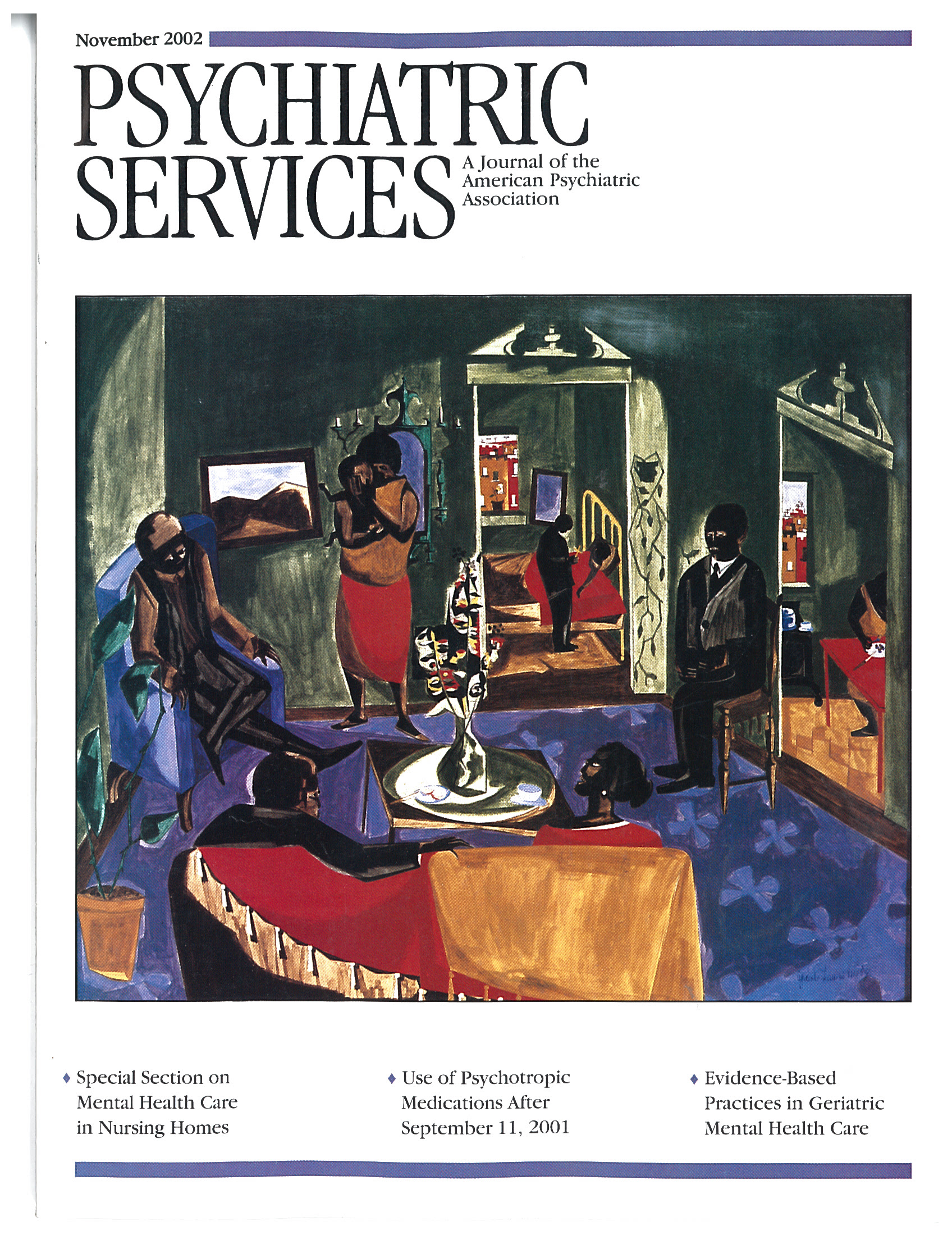Terrorism and People With Mental Illness
To the Editor: Public discussions about the impact of the events of September 11, 2001, have focused almost entirely on the general population of the United Sates. These discussions have addressed concerns about the impact of terror—past and anticipated—on the mental health of the population and about the impact of government responses to terror (1). Little attention has been devoted to the impact of terror on people with serious mental illness.
The Vermont Mental Health Performance Indicator Project has begun to investigate the impact of September 11 on adults with severe and persistent mental illness. Preliminary findings indicate that after September 11 there was a substantial increase in the relative risk of arrest among young adults—people between the ages of 18 and 34—who were receiving services for serious mental illness in Vermont. During the 24 months before September 11, service recipients were between three and four times as likely as other young adults to be arrested. During the weeks after September 11, they were six times as likely to be arrested. The increased relative risk had declined somewhat by the end of March 2002 but still remained greater than the risk before September 11 (2).
These findings are based on analysis of existing statewide data sets from public mental health service providers and police departments. The study focused on young adults because they have higher levels of involvement in the criminal justice system. Because these data sets do not share unique person identifiers, probabilistic population estimation (3) was used to determine the number of people represented in both data sets during each month of the study period. Similar methods have been used to examine the impact of service system changes on involvement in the criminal justice system among recipients of mental health services in New York (4). In the study reported here, interrupted time series analysis was used to measure change.
We believe that these findings indicate that systematic research on people with mental illness must be undertaken to complement research on the impact of terrorism on the general population. Research in both areas should examine psychiatric, behavioral, and organizational indicators of the status and well-being of study participants.
The change in the relative risk of arrest that we observed might be the result of exacerbation of psychiatric symptoms among service recipients, increased law enforcement activity, or some combination of the two. Research that attempts to disentangle the impact of these two factors will have important implications for program administrators and direct service providers. Administrative databases are widely available for assessing a number of important indicators of quality of life. Thus the research methods described here can be used to efficiently measure the impact of September 11 on psychiatric populations and other vulnerable populations while protecting the confidentiality of medical records and the personal privacy of individuals (5).
Dr. Pandiani is affiliated with the Vermont Department of Developmental and Mental Health Services in Waterbury. Dr. Banks is with the Bristol Observatory in Bristol, Vermont.
1. Susser ES, Herman DB, Aaron B: Combating the terror of terrorism. Scientific American 287(2):70-77, 2002Google Scholar
2. Pandiani JA, Simon MM, Bramley JA, et al: The impact of managed care and September 11, 2001, on criminal justice involvement for young adults with severe and persistent mental illness. Presented at the National Conference on Mental Health Statistics, Washington, DC, May 28-May 31, 2002Google Scholar
3. Banks SM, Pandiani JA: Probabilistic population estimation of the size and overlap of data sets based on date of birth. Statistics in Medicine 20:1421-1430, 2001Crossref, Medline, Google Scholar
4. Rosenheck RA, Banks SM, Pandiani JA, et al: Bed closures and incarceration among users of VA behavioral health services in upstate New York. Psychiatric Services 51:1282-1287, 2000Link, Google Scholar
5. Pandiani JA, Banks SM, Schacht LM: Personal privacy vs public accountability: a technological solution to an ethical dilemma. Journal of Behavioral Health Services and Research. 24(4):33-44, 1998Google Scholar



